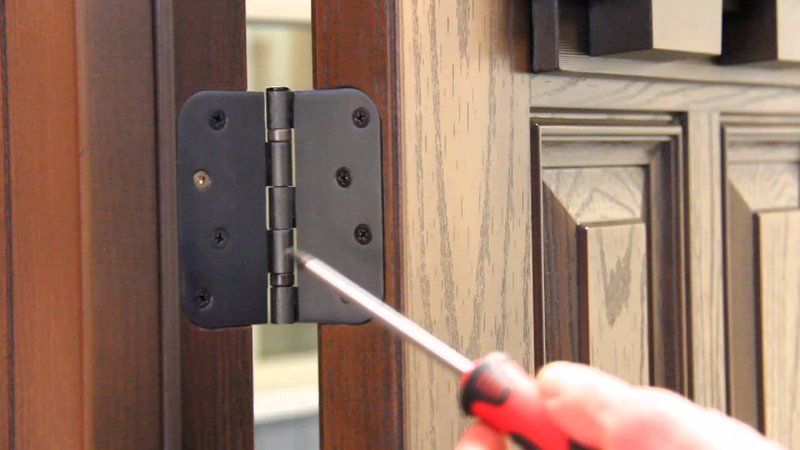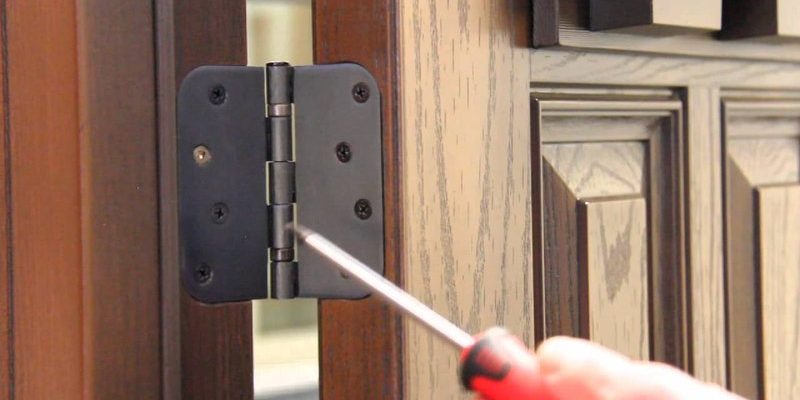
Honestly, this is a super common problem with all types of exterior doors, from sturdy Craftsman styles to the beefier hurricane-rated ones. It usually boils down to a few familiar culprits: worn-out hinges, loose screws, or maybe even the house settling slightly. Whatever the reason, learning how to adjust a heavy exterior door that’s dragging on its hinges is far easier than you’d think. You don’t need to be a pro or have a basement full of fancy tools. With a little patience and the right steps, you can get that door gliding smoothly again—and your floors will thank you.
Why Heavy Exterior Doors Start Dragging
It’s easy to shrug off a door that’s a bit sticky or hard to open. But when it comes to heavy exterior doors, ignoring the problem can make things worse fast. Most of these doors are built tough—they’re supposed to keep out weather, keep your house secure, and look good doing it. But all that weight takes a toll, especially if the door gets daily use.
Let me explain why this happens. Over time, the force of opening and closing a heavy door can pull on the hinges and the screws that hold them in. If the screws loosen, the door starts to sag a little. If the house settles (which is super common, especially in older homes), the frame might shift just enough to throw the door out of alignment. And don’t forget—sometimes it’s just gravity doing its thing, especially if the top hinge can’t support all that weight anymore.
You might be wondering if it’s just the hinges’ fault. Not always. Sometimes the problem starts with the frame, or the screws end up stripping the wood if they’re too short or not anchored properly. Over the years, even steel doors can drag if the hinge pins are worn or bent. Bottom line: a dragging heavy exterior door is calling out for some much-needed TLC.
Signs Your Exterior Door Needs Adjusting
Before you grab your tool kit, let’s double-check that a hinge adjustment is really what you need. Any of these ring a bell?
- Scraping Sounds: If you hear a scratchy sound or see scuff marks where the door hits your floor or threshold, that’s a big red flag.
- Sticking or Jammed Door: A door that feels sticky or won’t shut properly probably isn’t lined up how it should be.
- Visible Gaps: Check around the edges—if you see uneven gaps at the top or bottom, something’s off.
- Loose Hinges: Hinges that wiggle or look crooked can definitely cause sagging.
- Drafts or Daylight: If you feel a draft or see light around the door, it’s likely not seating right in the frame.
Here’s the thing: even if you only have one of these problems, you’re better off fixing it now instead of waiting for things to get worse. Catching the problem early can save your floors, your sanity, and maybe even your heating bill.
What Tools and Supplies Will You Need?
You don’t need a full workshop, but a few simple tools will make this much easier. If you don’t already have these, most hardware stores have affordable options.
- Screwdrivers: Both Phillips head and flathead, since door hinge screws vary.
- Drill and Drill Bits: Optional, but makes tightening or replacing screws much faster.
- Longer Screws: 2–3 inch wood screws are perfect for re-anchoring hinges securely in the door frame.
- Shims: Thin slices of wood or cardboard to temporarily lift the door if needed.
- Hammer: For tapping hinge pins if necessary.
- Level: A small one will help make sure everything lines up.
- WD-40 or hinge lubricant: Good to have if you’re dealing with squeaky or stiff hinges.
It’s a little like assembling a toolkit for a quick bike repair: you probably won’t need every tool on the list, but having the basics ready means you can handle any surprises that pop up during the adjustment.
Step-By-Step: How To Adjust a Heavy Exterior Door That’s Dragging
Now, let’s get to the good part—the actual fix. Don’t worry if this feels intimidating. Just follow these steps, and I promise it’ll all make sense as you go.
1. Examine the Hinges and Screws
Start by opening the door and looking closely at each hinge. Are the screws loose? Do any hinges look bent? Give each hinge a gentle wiggle—if there’s movement, tightening the screws might solve the problem. Sometimes you’ll notice the top hinge is the main troublemaker, since it’s holding more weight.
2. Tighten All the Hinge Screws
Grab your screwdriver or drill and tighten each screw on the hinges, both on the door and in the frame. Here’s a tip: if you find a screw just spinning in place, it’s probably stripped. Replace it with a longer screw—that way, it bites into the solid wood of the frame, not just the outer trim. This is one of those small fixes that can make a huge difference.
3. Adjust the Door’s Position
If tightening the screws doesn’t lift the door enough, try this trick: with the door open, slip a shim or two under the latch side, gently lifting the door higher in the frame. While a friend holds the door steady, loosen the hinge screws just a hair, then re-tighten them while the door is propped up. This can help “reset” the alignment.
4. Check the Hinge Pins
Hinges have removable pins that hold the plates together. Sometimes these pins get worn down or develop a slight bend, throwing everything off. Tap out each pin with a hammer if you need to inspect it. If it looks bent, you can try gently straightening it or replace it. Lubricate the pins before putting them back in—this can reduce squeaking and extend hinge life.
5. Test and Repeat If Needed
Close and open the door a few times. Does it swing smoothly without scraping? If not, repeat the shim-and-tighten routine, double-check all screws, or look for gaps that might mean the frame’s shifted more than you thought.
The trick is patience—it might take more than one try to get everything perfectly balanced, especially with a heavy exterior door.
When to Replace Hinges or Screws
Sometimes, tweaking and tightening just won’t cut it. If your hinges are rusty, cracked, or just don’t look like they’re up to the job, it’s probably time for a swap. Upgrading to heavy-duty hinges—especially ones rated for exterior doors—can make a world of difference.
Here’s what to look for before you decide to replace anything:
- Visibly damaged hinges: If the metal is warped, cracked, or bent, don’t mess around—replace them.
- Screws that just won’t grip: Even long screws won’t help if the wood is stripped. In this case, fill the hole with a wooden dowel or toothpicks coated in wood glue, then drive in a new screw once it’s dry.
- Poorly functioning hinge pin: If the pin won’t go back in straight or keeps slipping out, a new hinge is probably safer.
Think of it this way: trying to patch up a truly worn-out hinge is like taping a leaky pipe—it might work for a bit, but it’s not a long-term fix.
How To Prevent Future Door Dragging
Once your heavy exterior door swings like it’s brand new, you’ll want it to stay that way. Here are a few easy maintenance steps to keep in mind.
- Check Hinges Regularly: Every few months, give all the screws a quick tightening session. Catching a loose screw early can save you a lot of trouble.
- Lubricate Moving Parts: A spritz of WD-40 or a dab of white lithium grease on the hinge pins every season keeps things smooth and quiet.
- Watch the Frame: If you start seeing cracks, gaps, or shifts in the frame, look into it sooner rather than later. Sometimes stopping a small problem early prevents a sagging door down the line.
- Install a Door Closer: For especially heavy doors, a door closer can take some strain off the hinges and keep the swing gentle.
Honestly, a little bit of attention now and then can save you from major repairs—and keep your entryway looking sharp.
Comparing Quick Fixes vs. Professional Repairs
If you’re dealing with a heavy exterior door, it’s totally normal to wonder if you should tackle the job yourself or call in a pro. Here’s how to think about each option:
- DIY Adjustments: Tightening screws, adding shims, or swapping in longer screws are safe and doable for most folks. You just need some basic tools and patience.
- Professional Repairs: If your door is still dragging after you’ve tried everything—or the frame itself is warped, or the threshold is out of alignment—it might be time to call a local handyman. They’ll have the right materials and know-how to handle tricky situations, like resetting a frame.
- Replacing with Upgraded Hardware: If your current hinges just aren’t heavy-duty enough, installing new ones is usually worth the investment. Some brands even make adjustable hinges that let you fine-tune alignment with a twist of a screw. These are perfect if you want a long-term, set-it-and-forget-it solution.
Here’s the bottom line: simple dragging problems usually have pretty simple fixes, but don’t feel bad if you need a pro for the tough cases. The most important thing is making sure your home stays comfortable and your door works the way it should.
Final Thoughts: Keeping Your Heavy Exterior Door In Top Shape
Dealing with a heavy exterior door that’s dragging on its hinges can be a pain, but it’s far from a lost cause. With the right troubleshooting steps—tightening screws, using shims, and checking for worn-out hardware—you can get that door gliding smoothly again, no matter the brand or style. Keeping your door in good shape is part of regular home maintenance, just like checking your smoke alarms or changing your HVAC filters. A little attention now can keep your entryway secure, your floors scratch-free, and your house looking sharp.
So next time your door starts dragging, you’ll know exactly what to do. Grab your tools, take it step by step, and remember: you’ve got this.
